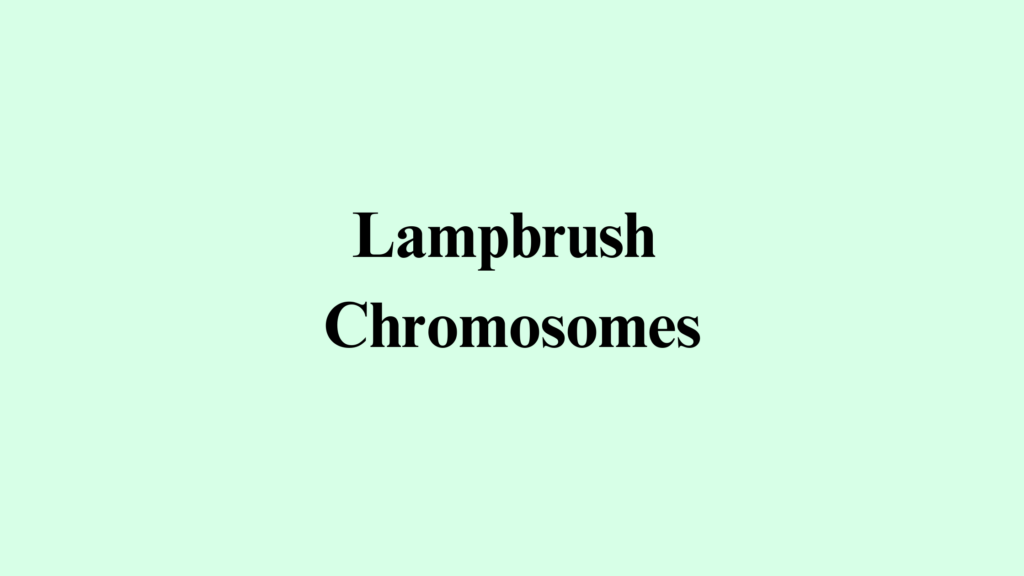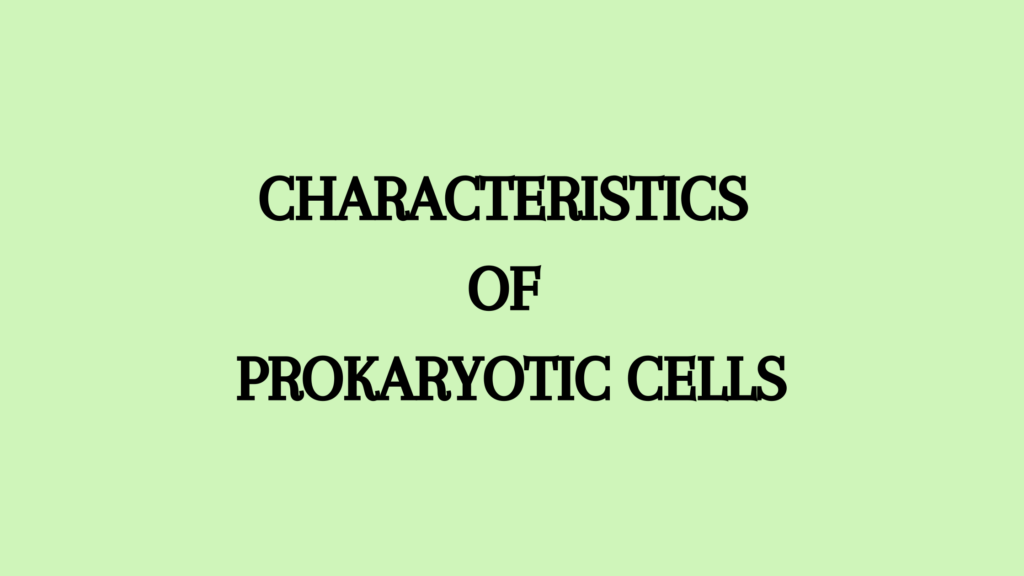Lampbrush chromosomes appear like brushes used for cleaning glass chimneys of kerosene lamps. A detailed study of lampbrush chromosomes was made by J. Ruckert on the oocytes of sharks. The lampbrush chromosomes were found in animal oocytes, which grew greatly during the prophase of Meiosis I. This produces a lot of RNA.
They have been described in Sepia ( Mollusca ), Echiera ( Echinoderm ), and in several species of insects, sharks, reptiles, amphibians, and birds. The lampbrush chromosomes of vertebrates are larger than those of invertebrates. They have a hairy appearance.
Discovery and Naming
- First observed in salamander (amphibian) oocytes in 1882.
- Named “lampbrush” due to their resemblance to the brushes used for cleaning glass chimneys of old-fashioned paraffin or kerosene lamps.
- Detailed descriptions were made in shark oocytes by R. Ruckert (1892).
- Thorpe (1984) and Burns & Bottino (1989) preferred the term “test tube brush chromosomes.”
- Gall and coworkers (1962, 1983) interpreted their function as a means of “turning genes on and off.”
Occurrence
Lampbrush chromosomes are found in the diplotene stage of meiotic prophase I in primary oocytes of vertebrates (e.g., amphibians, reptiles, birds, mammals, including humans) and invertebrates (e.g., Sagitta (Chaetognatha), Sepia (Mollusca), Echinaster (Echinodermata), and insects).
More prominent in vertebrates compared to invertebrates, where they appear smaller and “hairy.”
They are also found in:
- Spermatocytes of some species.
- The giant nucleus of Acetabularia (a green algae).
- Certain plant species (Grun, 1958).
Best studied in salamander oocytes due to their high DNA content, with some chromosomes reaching up to 1 mm in length (e.g., urodele amphibians).
Morphology of Lampbrush Chromosomes
- In the early prophase, the lampbrush chromosome (LBC) is a bivalent that consists of two pairs of conjugating homologues, forming a tetrad.
- Each chromatid is composed of alternatively positioned regions of condensed inactive chromatin (visible as dark irregular structures) and side loops of decondensed chromatin.
- In the homologous sections of the bivalent, chromatin is condensed (spirally twisted) or decondensed in the form of side loops – two per each chromosome and four at the level of the bivalent.
- It is 400 ± 800μm long as opposed to as the most 15 ± 20 μm during later stages of meiosis.
Structural Features
Size of Lampbrush Chromosomes
- In many animals, lampbrush chromosomes may be more than 1000 microns in length and 20m in width during early prophase I.
- Towards the end of prophase I, chromosomes contract and are greatly reduced in size and may contract further.
- The loops are present as bivalents in meiotic prophase I.
- Here, maternal and paternal chromosomes are held together by chiasmata.
- Each bivalent consists of four chromatids (two in each homolog) to form a tetrad.
Chromosomal Axis
During metaphase I, under a light microscope, each chromosome seems to consist of an axis along which there is a row of dense granules or chromomeres. From each chromomere arises a pair of lateral loops.
- Each chromosome of the pair of homologous chromosomes consists of two chromatids, which are represented by axial filaments.
- Thus, the pair of homologous chromosomes has four filaments in all.
- The main axis is formed by a row of granules chromomeres.
- The axial filaments and chromomeres consist of DNA.
- Each paired chromosome has several chromomeres along its length.
- From each of these chromosomes, a pair of lateral loops arise on opposite sides and are perpendicular to the main axis of the chromosome.
- Sometimes 1-9 pairs of lateral loops arise from a single chromomere.
- At the ends of the lampbrush chromosomes, there are small swellings without any loops. These are called telomeres.
- Each bivalent also contains a loop-free region, the centromere.
- Chromomeres are found in pairs and perhaps correspond to heterochromatin.
- The lampbrush chromosomes (LBCs) are ~30 times less tightly packed, and their total length is 5 to 6mm.
- They are organized into ~5000 chromomeres.
Loops
Loops are of two main types: typical and special.
- Each typical loop consists of a central axis from which RNA fibrils arise progressively in increasing length.
- The special loops have a marked asymmetry and have granules at the end of the fibrils.
Callan and Loyd have suggested that each pair of loops of lampbrush chromosomes is associated with actively specific genes. Each loop is supposed to contain repeating DNA sequences or genes. In other words, there are several identical copies of genes in each loop. A higher rate of synthesis is possible because of the presence of similar repeating genes. It has been proposed to have the loop continually spin out from the chromonema at the thin end and rewind at the thick end.
Key Characteristics of Loops
Each loop of the lampbrush chromosome contains a single DNA molecule unfolded for transcription. 5–10% of DNA is in lateral loops; the rest remains tightly packed in inactive chromomeres. There are no loops at the centromere.
- Loops are always asymmetrical.
- Every chromosome has two loops (one for each chromatid).
- The pairs of loops are produced due to the uncoiling of the two chromatin fibers present in a highly coiled state.
- Each loop appears at a specific chromosome position and consists of an axial fiber covered with the matrix.
- The loops of a paired chromosome form a mirror-image structure.
- The centromere of the chromosomes have no loops.
- It is extensible as well as contractible.
- This stage can last several months to several years.
- There are around 10,000 loops seen in a chromosome set or haploid set (e.g., oocytes of salamander Triturus, Grant, 1978).
- Lampbrush chromosomes differ in their size, thickness, and morphology, helping in chromosome mapping.
- The size of loops varies from 4 -5μm in interchromomeric fibres and increases with the size of the genome.
- The number of pairs of loops gradually increases in meiosis till it reaches a maximum in diplotene.
- As meiosis proceeds further, the number of loops gradually decreases, and the loops ultimately disappear.
- The disappearance of loops is due to reabsorption back into the chromomere.
Function of Loops
- Its primary function is RNA synthesis (transcription of hnRNA, precursor to mRNA).
- It is involved in the synthesis of mRNA and proteins required for embryonic development.
- They also produce “masked” mRNA for early development.
- Each loop represents one long Operon containing repetitive citrons that help meet the high rate of synthesis.
- Each locus codes for RNA and helps form the yolk material in the egg.
- It is found that disintegrating loop ceases the formation of lampbrush chromosome (LBC).
Transcriptional activity of Lampbrush Chromosomes
When the loop is treated with deoxyribonuclease ( an enzyme that breaks down DNA ), it is broken down, which shows it contains DNA. When treated with ribonuclease ( an enzyme that breaks down RNA ), the matrix of the loop is removed. From this, it can be concluded that the matrix consists of RNA and protein.
RNA synthesis seems to occur at the point of attachment of the fibril and the main axis of the loop. RNA polymerase is actively engaged in the transcription of genetic information in RNA.
- Each loop contains:
- A single DNA molecule unfolded for transcription.
- 5–10% of DNA in lateral loops; the rest remains tightly packed in inactive chromomeres.
- No loops at the centromere.
Each loop has an axis made up of a single DNA molecule that is unfolded from the chromosome during RNA synthesis. Some loops correspond to a single gene, while others contain multiple genes with non-transcribed chromatin sections.
- Uncoiling or formation of loops makes the DNA exposed and available for transcription of the gene.
- RNA polymerase binds to the DNA axis of the loop.
- RNA fibrils grow in length as transcription progresses, forming ribonucleoproteins.
- Transcription follows a thin-to-thick pattern, creating “Christmas tree” images under electron microscopy.
- The loop is seen as differentiated into the thin end from where transcription starts and a thick end from where transcribed RNA is collected.
- Chromatin fibers are seen progressively uncoiling towards the thin end of the loop which later associated with RNA and protein to become thicker.
- The DNA at the thick end of a loop is progressively withdrawn and reassembled into the chromomere.
- Polymerase II transcribes the largest loops, while polymerase III transcribes the smallest loops.
- They contain 5S RNA coding units, tRNA, or short replication sequences.
- Since 5S RNA sequences are short and divided by noncoding elements, transcription is limited to coding sequences.
- These transcripts are short and do not have the distinctive matrix.
- Example: In Notophthalmus viridescens (American newt), histone gene clusters are separated by 50,000 bp repeats of 225-bp satellite DNA (Gall et al., 1981).
Lampbrush Chromosomes Based on Transcriptional Activity
- LBCs can be divided into those with one transcriptional unit and those with two or more.
- Over the length of 1μm, one transcriptional unit is transcribed by a densely compacted package of around 13-20 polymerase molecules.
- Changes in transcriptional activity greatly affect the morphology of chromosomes.
- There is no RNA synthesis at the thick end of the loop.
Hypotheses on Loop Function
1. Spinning Out and Retraction Hypothesis (Gall & Callan, 1962)
- They suggested that loops are dynamic, continuously unfolding and retracting.
- They also proposed that 100% of the genome is expressed during the lampbrush stage.
- DNA-RNA hybridization experiments later rejected this hypothesis (Grant, 1978).
2. Master and Slave Hypothesis (Callan & Lloyd, 1960)
Master and Slave proposed that:
- Each chromomere and loop pair corresponds to a single gene’s activity.
- A “master gene” at the chromomere controls multiple “slave copies” in the loop.
- Only slave copies undergo RNA synthesis, ensuring high transcription levels.
Though now obsolete, this hypothesis highlighted the significance of gene duplication in RNA production.
Changes in Loops During Meiosis
- The number of loops increases during meiosis and reaches a maximum at diplotene.
- This lampbrush stage may last for months or years while the oocyte accumulates mRNA for later development.
- As meiosis proceeds:
- Loops gradually decrease.
- They disappear either by disintegration or reabsorption into the chromosome.
- Histone addition stops RNA synthesis and retracts loops (Ambrose & Easty, 1979).
References
- Agarwal, P. V. |. V. (2004). Cell biology, Genetics, Molecular Biology, Evolution, and Ecology: Evolution and Ecology. S. Chand Publishing.
- https://www.sscollegejehanabad.org/study-material/1936185782Structural%20organization%20and%20functions%20of%20lampbrush%20chromsome.pdf
Additional Reading
- Short Note on Chromosome
- Describe The Structure Of Chromosome
- Explain Centromere and Telomere
- Polytene Chromosome Notes: Structure and Function




